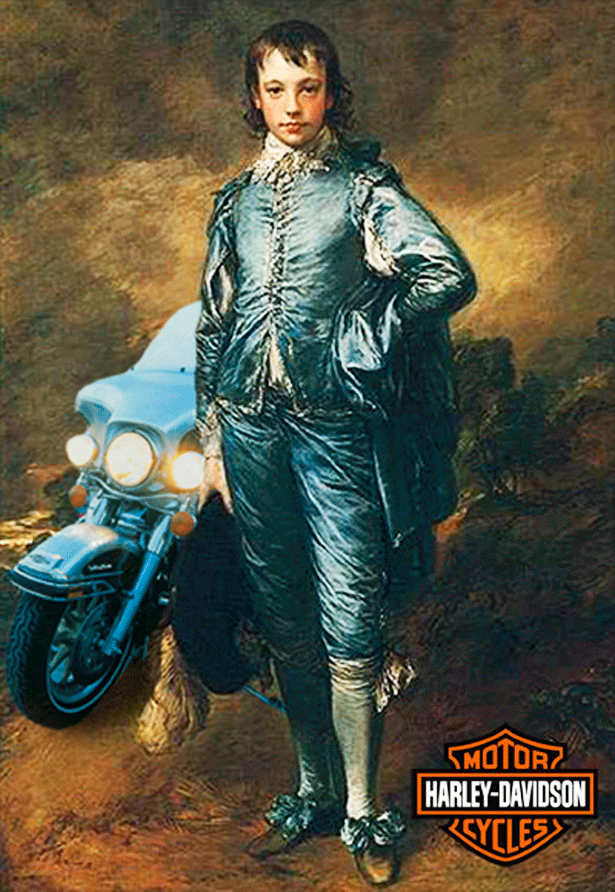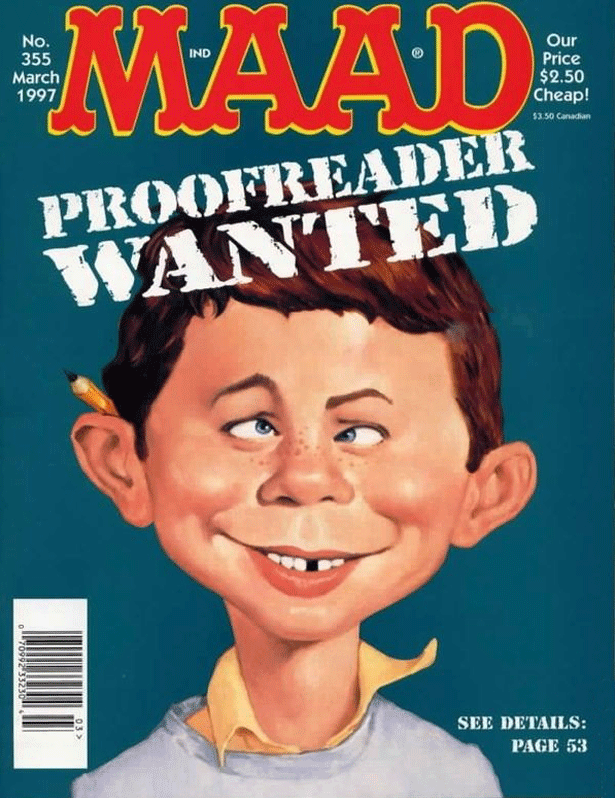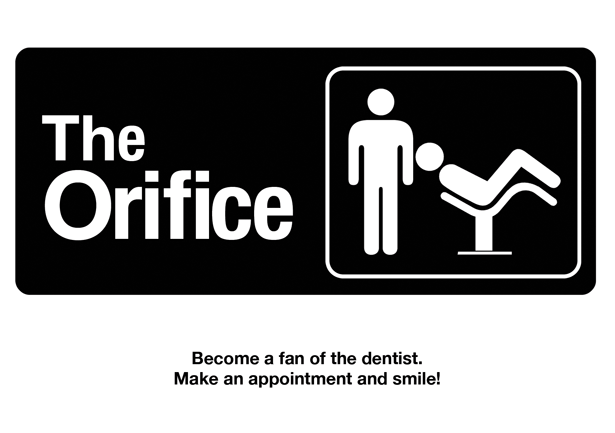 AAAAARGH! you scream as you exit the meeting. So, your great idea was turned down by someone at work or a client. Is that failure? Yes, but not on your part. You researched the idea, market, demographics, and, like most creatives, have a finger on the pulse of pop culture. So, why didn’t it fly?
Most of the time it’s because the world is filled with frightened, self-involved, visionless, jealous robots masquerading in business attire that hold the key to moving forward with innovation. Am I being too tough on the middle management? I can never gauge my displeasure with the lack of innovation that causes society to backslide with the opinions of others. I feel that stagnation is decay.
There is a question that hiring managers like to ask interviewees, thinking they are trapping the poor saps in a sticky web of words:
“What do you do when you are finished with your work?”
Most people will not know how to answer. The hiring managers are looking for “ask for more work” as the correct answer. I’ve always replied, with a laugh, “Who’s ever done with work?”
I tell them about my self-initiated projects, creating product ideas, researching technological advances, and new media applications to the company’s business acumen and processes. This is where the interviewer’s eyes glass over and I’m thanked for coming in but they “have more people to interview.”
Why? Because they want people who will ask for more work and not go off their own, trying to create something outside of the team dynamic of control and suppression. They would rather have someone ask for more work and be given busy work like filing or stacking boxes than have someone trying to figure out how to make millions of dollars for the company. That, of course, is why America is where it is as a global innovator. We can’t even get to our own space station anymore unless we hitch a ride with the Russians or Europeans.
Great ideas, however, never die. They are put into cryogenic freeze until they either are introduced by someone else and THEY make millions while your company follows suit with a poor imitation a year or two later, or someone else at the company introduces it months later once you are gone or castrated and no one will believe such a eunuch would be able to think on such terms.
AAAAARGH! you scream as you exit the meeting. So, your great idea was turned down by someone at work or a client. Is that failure? Yes, but not on your part. You researched the idea, market, demographics, and, like most creatives, have a finger on the pulse of pop culture. So, why didn’t it fly?
Most of the time it’s because the world is filled with frightened, self-involved, visionless, jealous robots masquerading in business attire that hold the key to moving forward with innovation. Am I being too tough on the middle management? I can never gauge my displeasure with the lack of innovation that causes society to backslide with the opinions of others. I feel that stagnation is decay.
There is a question that hiring managers like to ask interviewees, thinking they are trapping the poor saps in a sticky web of words:
“What do you do when you are finished with your work?”
Most people will not know how to answer. The hiring managers are looking for “ask for more work” as the correct answer. I’ve always replied, with a laugh, “Who’s ever done with work?”
I tell them about my self-initiated projects, creating product ideas, researching technological advances, and new media applications to the company’s business acumen and processes. This is where the interviewer’s eyes glass over and I’m thanked for coming in but they “have more people to interview.”
Why? Because they want people who will ask for more work and not go off their own, trying to create something outside of the team dynamic of control and suppression. They would rather have someone ask for more work and be given busy work like filing or stacking boxes than have someone trying to figure out how to make millions of dollars for the company. That, of course, is why America is where it is as a global innovator. We can’t even get to our own space station anymore unless we hitch a ride with the Russians or Europeans.
Great ideas, however, never die. They are put into cryogenic freeze until they either are introduced by someone else and THEY make millions while your company follows suit with a poor imitation a year or two later, or someone else at the company introduces it months later once you are gone or castrated and no one will believe such a eunuch would be able to think on such terms.
Great innovators, witches, and crazy people
People are still talking about Steve Jobs months after his passing. He certainly was one of the leaders in innovation of the 20th and 21st century. Of innovative people, Mr. Jobs said:Here's to the crazy ones, the misfits, the rebels, the troublemakers, the round pegs in the square holes... the ones who see things differently—they're not fond of rules...You can quote them, disagree with them, glorify or vilify them, but the only thing you can't do is ignore them because they change things...they push the human race forward, and while some may see them as the crazy ones, we see genius, because the ones who are crazy enough to think that they can change the world, are the ones who do.So, who listens to a crazy person? Are the creative ones ignored? In my experience, more effort is put into suppressing their voices than listening to what they might have to say. How long did Mr. Jobs and Apple have to put up with bad press and nasty rumors? Mr. Jobs also said:
As individuals, people are inherently good. I have a somewhat more pessimistic view of people in groups. And I remain extremely concerned when I see what's happening in our country, which is in many ways the luckiest place in the world. We don't seem to be excited about making our country a better place for our kids.He also continues the pessimism with:
Be a yardstick of quality. Some people aren't use to an environment where excellence is expected.Think about it -- what do you face every day at work or with clients. It’s just more of the status quo, isn’t it?
Leonardo da Crazy

Forget the painting of the weird lady. Look at some of the inventions this man had in the late 15th century. Tanks, parachutes, the ornithopter, and some wonderful deadly weapons that would have changed warfare and the history of the world had anyone listened to him. Perhaps this isn’t the strongest argument for fostering innovation but the point is, variations on his inventions were all put into use several hundred years later.
Nikola Tesla – mad scientist!
 Tesla (1856 – 1943) was a Serbian-American inventor, mechanical engineer, and electrical engineer. He was an important contributor to the birth of commercial electricity, and is best known for developing the modern alternating current (AC) electrical supply system. Tesla's patents and theoretical work formed the basis of wireless communication and the radio. Tesla demonstrated wireless energy transfer to power electronic devices in 1891 and aspired to intercontinental wireless transmission of industrial power in his unfinished Wardenclyffe Tower project.
Due to rumors of patent theft and deliberate rumor-mongering by a jealous Thomas Edison and, I suppose, other naysayers of his inventions, Tesla became reclusive towards the end of his life, only appearing occasionally to make statements to the press. Because of his unusual pronouncements and the nature of his work over the years, Tesla gained a reputation in popular culture as the archetypal "mad scientist."
Looking at his ideas and work now, was he so “mad?” Angry and dejected, maybe but not “mad.” This is one of the dangers of the creative mind and innovation. The desire to innovate is driven by passion and passion is emotional. Where emotion drives one’s life, there is sure to be disappointment and, usually, some sort of breakdown.
One of Tesla’s quotes shows his vision for the future…a future we are still coming to realize:
Tesla (1856 – 1943) was a Serbian-American inventor, mechanical engineer, and electrical engineer. He was an important contributor to the birth of commercial electricity, and is best known for developing the modern alternating current (AC) electrical supply system. Tesla's patents and theoretical work formed the basis of wireless communication and the radio. Tesla demonstrated wireless energy transfer to power electronic devices in 1891 and aspired to intercontinental wireless transmission of industrial power in his unfinished Wardenclyffe Tower project.
Due to rumors of patent theft and deliberate rumor-mongering by a jealous Thomas Edison and, I suppose, other naysayers of his inventions, Tesla became reclusive towards the end of his life, only appearing occasionally to make statements to the press. Because of his unusual pronouncements and the nature of his work over the years, Tesla gained a reputation in popular culture as the archetypal "mad scientist."
Looking at his ideas and work now, was he so “mad?” Angry and dejected, maybe but not “mad.” This is one of the dangers of the creative mind and innovation. The desire to innovate is driven by passion and passion is emotional. Where emotion drives one’s life, there is sure to be disappointment and, usually, some sort of breakdown.
One of Tesla’s quotes shows his vision for the future…a future we are still coming to realize:
We must be able to transmit things from other places over long distances…pictures, the news, energy…why not matter too? We must liberate thought from its limitations imposed by space and time, and yet keep its characteristics. This will be possible in the next decades or centuries.
What we almost missed…
A number of toy buyers wouldn’t touch the Barbie doll when she made her debut in 1959. The reason—she was too adult. The creator of the Barbie doll, Ruth Handler said that stores would not order the doll because they felt the consumers would not buy a doll with breasts. Now, of course, women are buying plastic breasts by the millions! I’m betting the introduction of breast implants met no opposition. Conceived by an unemployed heating engineer in Philadelphia, Clarence B. Darrow, Monopoly was turned down flat by games manufacturer Parker Brothers as having too many fundamental playing errors—52 to be precise. Undaunted, Darrow proceeded with faith in his product to have 5,000 copies made by a local box manufacturer and met with huge success. In 1935 Parker Brothers reversed their position and now Monopoly is the most popular board game in history with over a thousand variations. I wonder if any Parker Brothers executives were fired for turning it down in the first place? Oklahoma office worker George C. Beidler thought up the world’s first photocopier back in 1903, but because it was painfully slow it attracted very little attention. In 1938, however, an American patent attorney Chester Carison improved upon the invention but was hard pressed to find a research institute interested in taking the product further. It was not until 57 years later that the Beidler dream of the office photocopier came off the production line – and the Xerox 914 came onto the market. I assume Beidler died penniless while Xerox made billions. When Earl Silas Tupper first released his new product onto the market in 1945 he boasted the products ability to be sealed airtight and watertight. The seal almost proved to be his downfall as retail stores were unable to open it. Tupperware was a product that initially was hidden from view from the buying public on the top shelf in stores. There is no truth to the rumor that Tupper’s coffin was a giant Tupperware tub and he is still as fresh and tasty as the day he died. Alex Moulton of Bradford-on-Avon, Wiltshire England designed the revolutionary pushbike that folds in 1958. It was offered to Raleigh Bicycles a year later. They promptly rejected it. They felt the buying public would not purchase such a radical new invention. Moulton moved ahead anyway himself with his product and in 1965 sales had reached 70,000.Two years later in 1967 Raleigh had admitted their error in judgment and paid Moulton for the product rights. The executive who turned it down in the first place was forced to ride 50 miles on a bicycle with no seat attached to the frame pole. OUCH! Author JK Rowling had her book about a boy wizard at a school for magic was rejected by over two dozen publishers, including Penguin and HarperCollins, amongst other well-known book companies. Bloomsbury, a small London publisher, only took it on at the behest of the CEO’s eight-year old daughter, who begged her father to print the book. One can only hope there are over two dozen publishing editors who are still unemployed and only a magic spell will help them find a new job. “Unemployo-stupido!” One publisher rejected George Orwell's submission, Animal Farm, with these words: “It is impossible to sell animal stories in the USA.” According to one publisher, The Diary of Anne Frank was scarcely worth reading and wrote: “The girl doesn't, it seems to me, have a special perception or feeling which would lift that book above the 'curiosity' level.” The most famous blunder? The Beatles were turned down by most of London’s music executives. One famous rejection from Decca records (who chose a group called the Tremoloes, who were local and would not cost as much money): “Guitar groups are on the way out” and “the Beatles have no future in show business!” If we can take any lessons from these examples, it’s that one person…or several people can stop innovation, but it doesn’t mean they are correct. Persistence will usually pay off and when it does, success is the best revenge. Of course, meeting the person who turned you down again while they take your burger order and ask you if you want fires with that can be satisfying, too!I’ve seen the horror!
I worked for a corporation that was in big trouble. The products weren’t selling and so management asked everyone to innovate. It was priority number one. Unfortunately, they didn’t bother to put a mechanism in place to encourage or hear innovative ideas. The funnel of middle managers blocked everything. Massive layoffs were inevitable and, as with the fear of crazy people Mr. Jobs loved so much, the innovators were feared and the first to be fed to the hungry dogs. A sample for a pitch to Harley-Davidson for a line of cards with the "classics" theme using motorcycles Photoshopped into famous classic paintings. It had no vroom for the card company so it was never shown to Harley-Davidson. Crashed and burned before it could make it to those who had the deciding power. ©HD
Unfortunately, my consulting work on introducing innovation mechanisms to large corporations only saw the same results. Innovators were excited to see a way their ideas come to fruition, and then, in follow up conversations a year later, massive depression that “management funnels” were stopping any sort of initiatives or presentations. As beat poet Allen Ginsberg wrote in his epic poem, Howl: "I saw the best minds of my generation destroyed by Madness…"
A sample for a pitch to Harley-Davidson for a line of cards with the "classics" theme using motorcycles Photoshopped into famous classic paintings. It had no vroom for the card company so it was never shown to Harley-Davidson. Crashed and burned before it could make it to those who had the deciding power. ©HD
Unfortunately, my consulting work on introducing innovation mechanisms to large corporations only saw the same results. Innovators were excited to see a way their ideas come to fruition, and then, in follow up conversations a year later, massive depression that “management funnels” were stopping any sort of initiatives or presentations. As beat poet Allen Ginsberg wrote in his epic poem, Howl: "I saw the best minds of my generation destroyed by Madness…"
 Speaking of MAD-ness, the idea of producing an Alfred E. Neuman yamulke was religiously excommunicated by higher ups as "tying Alfred into one religion." While it was argued that he appears as Santa Claus and the Easter Bunny, those were not considered "religious" symbols. When this was first designed, people in the Warner Bros. office rushed in to place pre-orders. "But you're Catholic," one person was asked. He didn't care and promised to convert if the item was produced. Alfred E. Neuman™ EC Publications/WB
Speaking of MAD-ness, the idea of producing an Alfred E. Neuman yamulke was religiously excommunicated by higher ups as "tying Alfred into one religion." While it was argued that he appears as Santa Claus and the Easter Bunny, those were not considered "religious" symbols. When this was first designed, people in the Warner Bros. office rushed in to place pre-orders. "But you're Catholic," one person was asked. He didn't care and promised to convert if the item was produced. Alfred E. Neuman™ EC Publications/WB
 A great idea that was published but misunderstood was this cover of MAD Magazine. Readers didn't catch the humor of the two "A"s in the logo and started writing in to ask about the misprint. They missed the joke of "Proofreader Wanted" (several applications for the job were received although there was no page 53 in the 48 page publication). To add to the confusion, a joke retraction was added in the letters page to several of the letters identifying the "misprint," stating that it was a rare misprint and worth $2,500. When readers started calling the magazine asking where they could either sell a copy for $2,500 or buy one, another retraction was printed stating that the $2,500 price was a misprint and it was actually worth $2.50. Some people who thought they had $2,500 in their hands were miffed. It's an example of how an idea fail can succeed and THEN fail! ©EC Publications/WB
It is never easy seeing the future, only to have it stopped short, doomed, and thrown away. I preach to the choir when I speak of the frustration one sees in lost ideas.
A great idea that was published but misunderstood was this cover of MAD Magazine. Readers didn't catch the humor of the two "A"s in the logo and started writing in to ask about the misprint. They missed the joke of "Proofreader Wanted" (several applications for the job were received although there was no page 53 in the 48 page publication). To add to the confusion, a joke retraction was added in the letters page to several of the letters identifying the "misprint," stating that it was a rare misprint and worth $2,500. When readers started calling the magazine asking where they could either sell a copy for $2,500 or buy one, another retraction was printed stating that the $2,500 price was a misprint and it was actually worth $2.50. Some people who thought they had $2,500 in their hands were miffed. It's an example of how an idea fail can succeed and THEN fail! ©EC Publications/WB
It is never easy seeing the future, only to have it stopped short, doomed, and thrown away. I preach to the choir when I speak of the frustration one sees in lost ideas.

 Two ideas for dental reminder cards spoofed popular TV shows. Unfortunately, the taste funnel at the company didn't watch the shows and wouldn't approve the ideas.
Two ideas for dental reminder cards spoofed popular TV shows. Unfortunately, the taste funnel at the company didn't watch the shows and wouldn't approve the ideas.
 An example of wrong timing. A sample for a series of Warner Bros. characters rendered by famous painters was never produced when introduced in 2000. Several years later they were used but not attributed to the original designer. That's all, folks! ©WB
An example of wrong timing. A sample for a series of Warner Bros. characters rendered by famous painters was never produced when introduced in 2000. Several years later they were used but not attributed to the original designer. That's all, folks! ©WB
Beating the odds
I’ve found several ways to introduce innovation with little effort. Most rejection does not happen because people don’t believe in the idea—it occurs because people didn’t think of it themselves. There are several solutions to approaching the problem. The first is to find a champion among higher-ups. Involving someone who can approve decisions will create a “we” partnership instead of a “you” or “I” feeling. In the examples given in this article, it was always one person who tried to break into the inner circle. Teaming up with someone, usually above middle management, or just someone who has the ear of upper management not only gets the idea heard but makes it appear to be a company team effort and psychologically, that has more weight than just one person. One person trying to make changes is considered a “maverick” or a “rebel.” Romantic and cool in movies or on dates works, but not for most businesses. The second, as pointed out to me by a coworker when I was angry about a great idea of mine being ignored, is to innovate a little everyday. Stay under the radar. Big leaps of change frighten people whereas small, unnoticed steps aren’t immediately seen. It takes more planning and thought but it can be done. A long time ago, being the young and digital enthusiast at a publication that used computers to set type headlines and then print the printouts on actual layout boards, I started small changes. The first was to scan artwork that was too small for the assigned space. Using the cloning tool in Photoshop, I saved money on the fees needed to order new art to the specified size. By working with the printer, creating digital files after everyone had left the office and sending them to the printer, half the magazine was printed digitally. When the angry editors started demanding to know why half the magazine looked like crap, I was able to show them not only how using digital files looked better, but figures from the printer showed substantial savings over having to strip in images and type. They didn’t exactly throw their hats in the air and yell, “WHOOPEE!” but with a few face-saving negotiations, we could all look like heroes without embarrassing anyone and, in the end, eventually the little negotiated steps we had to do to appease the editors were forgotten. Sometimes, it’s the little things that pile up to become mountains of change. No idea is really a failure. Even when turned down, it is usually a matter of timing and reintroduction. Keep ideas and innovations on a shelf, awaiting a better time and place to bring them to life. We are past the time of spending our entire careers in one company, so ideas can travel with us. One firm may shun change and another will encourage and yearn for it. Most of all, cherish that you have the ability to see innovation and, as Mr. Jobs said, “…because the ones who are crazy enough to think that they can change the world, are the ones who do.” Do you have a horror story to share about failed innovation? Are there bruises on your head from hitting it against a wall repeatedly in disbelief of decisions to not impliment a great idea? Can you cheer us up with a success story?Speider Schneider
Speider Schneider is a former member of The Usual Gang of Idiots at MAD Magazine and has designed products for Disney/Pixar, Warner Bros., Harley-Davidson, ESPN, Mattel, DC and Marvel Comics, Cartoon Network and Nickelodeon among other notable companies. Speider is a former member of the board for the Graphic Artists Guild, co-chair of the GAG Professional Practices Committee and a former board member of the Society of Illustrators. Follow him on Twitter @speider or add him on Google+
Read Next
3 Essential Design Trends, November 2024
Touchable texture, distinct grids, and two-column designs are some of the most trending website design elements of…
20 Best New Websites, October 2024
Something we’re seeing more and more of is the ‘customizable’ site. Most often, this means a button to swap between…
Exciting New Tools for Designers, October 2024
We’ve got goodies for designers, developers, SEO-ers, content managers, and those of you who wear multiple hats. And,…
15 Best New Fonts, September 2024
Welcome to our roundup of the best new fonts we’ve found on the web in the previous four weeks. In this month’s edition…
By Simon Sterne
3 Essential Design Trends, October 2024
This article is brought to you by Constantino, a renowned company offering premium and affordable website design
You…
A Beginner’s Guide to Using BlueSky for Business Success
In today’s fast-paced digital world, businesses are always on the lookout for new ways to connect with their audience.…
By Louise North
The Importance of Title Tags: Tips and Tricks to Optimize for SEO
When it comes to on-page SEO, there’s one element that plays a pivotal role in both search engine rankings and user…
By Simon Sterne
20 Best New Websites, September 2024
We have a mixed bag for you with both minimalist and maximalist designs, and single pagers alongside much bigger, but…
Exciting New Tools for Designers, September 2024
This time around we are aiming to simplify life, with some light and fast analytics, an all-in-one productivity…
3 Essential Design Trends, September 2024
September's web design trends have a fun, fall feeling ... and we love it. See what's trending in website design this…
Crafting Personalized Experiences with AI
Picture this: You open Netflix, and it’s like the platform just knows what you’re in the mood for. Or maybe you’re…
By Simon Sterne
15 Best New Fonts, August 2024
Welcome to August’s roundup of the best fonts we’ve found over the last few weeks. 2024’s trend for flowing curves and…
By Ben Moss















